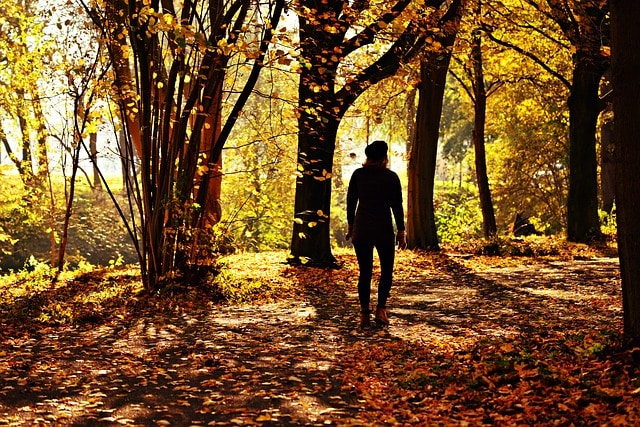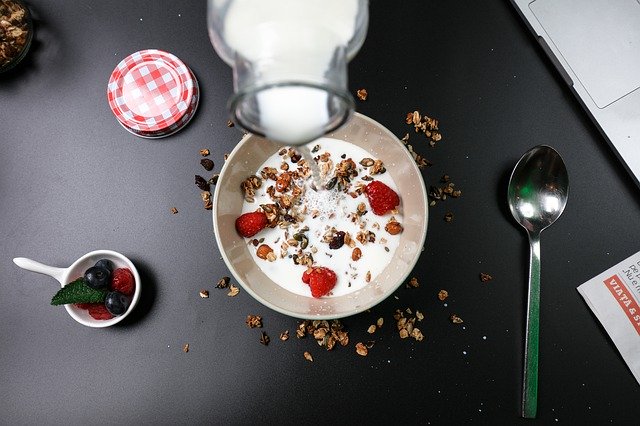Walking is the easiest workout that you can do. It requires no special equipment, no expensive membership fees, and no training. The technique you learned when you were one year old still works and you can begin your journey today.
Australia struggles with a high obesity rate that includes men, women, and children. The Australian Government Department of Health conducted a survey that found 67% of Aussie adults and almost 25% of children between 5-17 years were overweight or obese in 2017-2018.
Being overweight can lead to serious health and lifestyle problems that will take time, money and effort to fix. If you’re considering starting a walking routine, today is the day to start. Read on to discover many more reasons to begin this easy sport.

What are the health benefits of walking?
Walking is considered a weight-bearing exercise because it makes you carry your own weight. A regular brisk walk provides the following benefits:
- Improves heart health by giving you a cardio workout
- Lowers blood pressure
- Reduces the risk of coronary heart disease and stroke
- Helps you lose weight
- Helps manage Type 2 diabetes
- Improves the strength and flexibility of muscles, bones and joints
- Boosts the immune system
In addition to all the benefits listed above, it has been shown to aid recovery from long-term illnesses as a supplement to other treatments. Those with heart conditions have found it to be a gentle way of recovering and gaining strength gradually.
Walking also offers immense mental benefits like:
- Creates a sense of wellbeing and wards off stress and depression
- Release endorphins which are known to bolster mood and reduce anxiety
- Improves body image and confidence by managing weight
- Reduces the risk of clinical depression

How can I maximize the health benefits of walking?
When we refer to walking as a form of exercise, we’re not talking about strolling in the park, although even a gentle walk is better than no walk. If you want to see results, you need to look at your heart rate.
Here’s a tip if you don’t have a fitness wearable or an app: If you’re breathing so fast that you can’t talk in long sentences, your workout is good enough.
Start slow by all means. But as you get used to the pace, try some of these ways to increase the tempo:
- Choose uphill routes on steeper slopes or set the treadmill to Incline mode
- Carry hand weights or wear ankle weights to increase resistance
- Gradually increase your speed over time till you are almost jogging
- Increase the distance and time you walk
Do remember that the human body is highly adaptable and gets used to any form of physical activity fairly quickly. What may seem like a lot of effort in the beginning becomes easier as you do more of it.
How can I make it more interesting?
For any workout you do, you should consider switching it up to make sure you never get into a rut. Here are some things you can do to make sure that your walks are not becoming boring.
- Choose a different route and go at different times of the day
- Walk your pet or go with friends
- Become part of a club that chooses new and interesting routes
- Listen to music or an audio book
You can also incorporate walking into your daily routine to get more activity in.
- Ditch the elevator and escalators and take the stairs
- Get off the bus or the train one stop early and walk to your home or office
- Walk to the local shops and carry your groceries back
- Go for a walk when you are on the phone
Walking in nature has been found to be most beneficial, so choose a park or a nature trail whenever you can.

Are there any precautions I should take?
For the most part, walking is a fairly safe exercise but you could still take the following precautions:
- Always check with your doctor before starting a new fitness regime
- Start slowly and increase the pace according to your age and fitness levels
- Remember to warm up and cool down before and after any exercise
- Wear clothing and shoes that are suitable for exercise
- Hydrate well before and after a workout
- Avoid walking in high traffic areas with your headphones on
What should I eat before and after a walk?
To perform at its best, your body needs the right kind of fuel. When you begin a walking routine, choose your fuel based on the time of day that you walk.
If you are heading out in the morning, eat a snack like a banana, a slice of toast with nut butter before you go, and eat your breakfast when you return.
If you are planning on a walk during your lunch break, eat a light snack before you go and eat your lunch when you come back. Avoid brisk walking after a heavy meal.
If you go in the evening, a light fruit smoothie should be enough.
If you are planning a long walk of more than an hour or a more challenging nature hike, eat a protein-heavy meal before like eggs and wholemeal toast or a bowl of oatmeal. Don’t forget to carry snacks like energy bars, slices of fruit or trail mix with you.

No matter what time of the day you choose to go, make sure you drink a glass of water before and after your walk.
If you would like to talk to a nutritionist about your meal plans, Avaana can help you find one.
Is walking too easy?
If you are already following an exercise regime or are physically fit, walking might seem too easy or even pointless as a workout. But the right kind of walking offers calorie-burning, mind-clearing benefits with the added advantages of being low-impact and not requiring any equipment.
Running or jogging offers more of a challenge to your body by using more muscles and doing more for your heart rate, but comparing walking and running is like comparing apples and oranges. For Aussies who are overweight, have health conditions, or simply haven’t exercised in a while, walking can be a great way to become more active and reap the benefits of a workout without causing damage.
It can be an easy way to stay active and offers some of these conveniences:
- Requires no special equipment and no memberships
- Accessible to nearly everyone
- Low impact exercise
- Easy to start and easy to improve
- A relatively relaxing form of exercise
- Offers flexibility of exercise environment as you can walk in different places at different times
How much walking should I do every day?
To get the most from your walking routine, you should try to walk briskly for at least 30 minutes for 5 days a week.
If you have just started walking, you should begin with a moderately paced walk but gradually increase to a brisk walk if your health allows it. Brisk walking means you should be breathing faster and working up a mild perspiration.
Is walking the best form of exercise I can get?
This depends on what your goals are and where you are in your fitness journey.
Walking can offer moderate benefits for weight loss, building strength and stamina and toning your muscles. If you want to increase the results from your workout, you should consider more intense forms of exercise like running, gymming or swimming.
If you are not naturally an active person, if you have health conditions or are overweight, or if you have never exercised before, walking may be the best form of exercise you can get because it is low impact and easy to begin with.

Remember, any form of exercise is better than no exercise at all. Exercise has been proven to be better than most forms of medicine when it comes to preventing illness and disease. Any form of exercise including walking will improve your mental and physical health and is vital to your overall well-being. And the best part is that it is as simple as putting one foot after the other.



